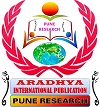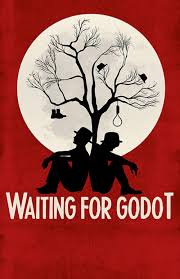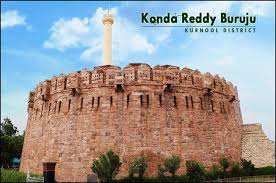VOL- 9, ISSUE- 3, PUNE RESEARCH TIMES (ISSN 2456-0960) JIF 4.06
9.3 TIMES
Area of Article : ALL

VOL- 9, ISSUE- 3, PUNE RESEARCH TIMES (ISSN 2456-0960) JIF 4.06
9.3 TIMES

VOL- 9, ISSUE- 3, PUNE RESEARCH TIMES (ISSN 2456-0960) JIF 4.06
9.3.1 TIMES

The paper will investigate
the absurdity and the purposelessness and meaninglessness of life in Samuel
Beckett’s play Waiting for Godot.
This work is magnum opus in the field of absurd literature. The unique and
charming feature of the play is it’s use of repetitive dialogues, settings and
actions -an essential element of absurdist drama. Beckett presents that
everything is superfluous and repetitive, only suffering and pain is permanent.
This tragi-comedy in two acts reflects, “Nothing happens, nobody comes, nobody
goes, it's awful!”. The portrayal of
Vladimir and Estragon is epitome of the meaningless life. Their acts of
engaging in foolish and dumb activities like taking out their shoes and hat and
the long communication indicate a frustrated, dull and monotonous life that
they are living, only to realise that suffering is the ultimate truth.
Keywords:
Absurdity, Purposelessness, Nothingness, Waiting
VOL- 9, ISSUE- 3, PUNE RESEARCH TIMES (ISSN 2456-0960) JIF 4.06
9.3.2 TIMES

The finding of Ashokan edicts at "Rajula
Mandagiri" and "Erragudi" confirms that these Deccan provinces
were part of the Mauryan empire. These regions, which formed a separate
province, were ruled by Aryaputra, who had his capital at Suvarna Giri. Some
historians associate Suvarna Giri with Jonna Giri in this district's Patti
Konda taluk. Following the Maurya’s, the province was ruled by Satavahanas,
Badami Chalukyas, Rastrakutas, Kalyani Chalukyas, and Warangal Kakatiya’s.
After fall of the Kakatiya dynasty in 1323 A.D., this district fell under the
control of Muhammad-bin-Tughluq, who divided the Deccan and south India into
five provinces and appointed governors to each.
Kurnool Fort is one of the town's most recognisable landmarks, located in the centre of the city. Achyutadevaraya (1530-1542 A.D.) of the Vijayanagara empire is supposed to have erected the current Kurnool fort (Kandenavolu Durgam). The fort was important in the history of Vijayanagara. Araviti Gopala Raja was Kurnool's last Hindu king. He was beaten by Abdul Wahab, a Bijapur sultan's general. Konda Reddy, a Palegar of Prathakota in Nandikotkur taluk, was the one who refused to recognise Abdul Wahab's suzerainty. Konda Reddy was imprisoned and died in this underground cell. As a result, it was given the name Konda Reddy buruju. It's broken into four sections.
Key Words: Kurnool, Kandenavolu, Ashokan’s edicts,
Kautilya’s Artha Sastra, Araviti, Palegar.